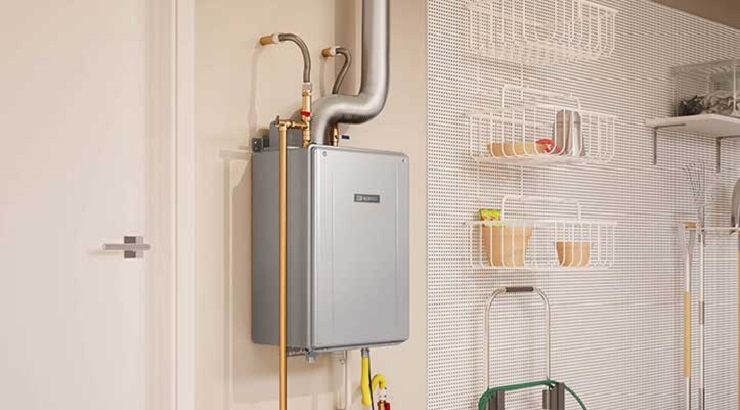Features
How to Choose the Right Tankless Water Heater
Everything you should know before opening your wallet.

A tankless water heater generates hot water only when required, and for as long as required, potentially saving up to 50% of electricity compared to tank-type water heaters.
To help you buy the best tankless water heater, here is everything you need to know about tankless water heaters – how they work, existing technologies, durability, costs, and more.
How do tankless water heaters work?
By tradition, households in many parts of the world dispense units of power into filled-up water tanks, day in and day out, to ensure a constant supply of hot water.
This technique wastes 40% to 50% of electricity. On the other hand, a tankless water heater does not require 24/7 powering, resulting in huge savings on electricity bills.
A tankless water heater works as follows: –
1.) When the hot-water tap is turned on, a flow sensor detects water flowing into the heater and signals the control panel to start generating hot water.
2.) In the case of a gas-fired heater, the control panel starts the fan, which then draws in air, opens the gas valve to let in the gas, and then ignites the burner.
3.) The heat from the flames is captured by the heat exchanger and shifted to the water flowing through the heat exchanger’s pipes.
4.) The mixing valve tempers the hot water flowing out of the heat exchanger.
5.) If the temperature sensor finds the water exceeding or falling short of the desired temperature, the control panel adjusts the gas valve, the mixing valve, and the flow-regulating valve as necessary.
Modern tankless water heaters
Introduced in the U.S. in the 1990s, tankless water heaters have evolved from simple apparatuses into highly automated gears with features such as digital connectivity.
Here are some of the modern technologies:
Digital connectivity
Modern tankless water heaters are Wi-Fi-compatible to allow users to adjust temperature settings and monitor hot water and gas usage using their smartphones.
RELATED: Radiant Floor Heating Systems
Besides, a smart tankless water heater can detect a malfunction and alert your plumber on the phone with specifics on how to solve the problem.
This eliminates guesswork when fixing issues.
Instant hot water
Like tank-type heaters, tankless water heaters take about 15 minutes to raise the temperature of water – but you still have to wait for the hot water to stream out of your outlet.
However, if the distance between the heater and fixture exceeds 50 feet, you should buy a heater with a built-in recirculation pump to save water and reduce the waiting time.
The pump, which can be turned on by a smartphone, timer, motion sensor, or push button, forces the cold water in the tubes back through the heater.
In a minute or so, the pump goes off and hot water jets out seconds after opening the tap.
Higher efficiency
Condensing gas heaters are designed to extract up to 96% of a fuel’s heat – equivalent to a 17% improvement over first-generation noncondensing heaters.
This is made possible by a second heat exchanger that retains much of the exhaust heat before it gets out of the wall vent.
However, condensing gas heaters are 25% more expensive than noncondensing ones.
They also create an acidic condensate that must be neutralized, either using a built-in neutralizing cartridge or a device fitted manually by an installer.
Types of tankless water heaters
There are two main types of tankless water heaters: indoor tankless water heaters and outdoor tankless water heaters.
As the names suggest, an indoor tankless water heater is installed inside the house while an outdoor unit is fitted outside the building and is designed to withstand elements of weather.
Indoor heaters can be installed anywhere but outdoor units are only applicable in regions where climate and building regulations allow.
Consult your local authorities before buying an outdoor water heater.
Mounting a tankless water heater outdoors is a great way to save space in your home. Besides, you do not need to drill holes through the side of the house to install exhaust vents.
It is also easy to maintain since a plumber can access it even when you are not at home.
However, outdoor units are not suitable for cold climates as extremely low temperatures put the unit at risk of bursting due to the expansion of freezing water.
Cost of tankless water heaters
On average, a small gas-fired unit retails for about $170 while high-output tankless water heaters – which can supply two showers at once – sell for at least $2,000.
Tankless electric water heaters sell for between $90 and $900.
It takes a pro to install a tankless water heater as the job involves upgrading the wiring in the case of electric units or making leak-free connections for gas-fired heaters.
Durability
Gas-fired tankless water heaters are designed to operate for at least 20 years – up to three times longer than tank-type water heaters.
On the other hand, tankless water heaters last for seven to 10 years.














